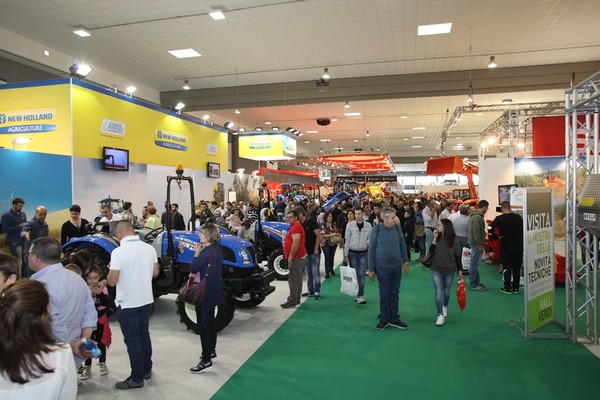
"Targeted" innovation: the strategy of Agrilevante
The International Exhibition of Machinery and Technology for Agriculture is characterized by a particular focus on specific needs of agricultural firms in the Mediterranean region, Africa and the Middle East. Many initiatives target professional farmers and operators, but also a broader audience, from central and southern Italy
Among the international exhibitions dedicated to agriculture, Agrilevante is the one that mosts focuses on production in the Mediterranean area, on typical crops of hot climates and territories with scarce water resources, and on small agricultural firms that characterize European countries in the Mediterranean area, Africa and the Middle East. The exhibition, which will be held from October 12 to 15 in Bari, was presented this morning to the press at the conference hall in the exhibition centre. The pavilions of the fair will showcase tractors, combine harvesters, machinery and equipment for traditional extensive crops, but also the complete range of specialized tractors (fundamental for orchard and vineyard production), the most diverse models of transporters and motorized vehicles for tillage of steep slopes or small areas of land, the broadest choice of equipment for family-run farming businesses, multi-purpose mechanical machines that meet different needs, from cultivation operations to transport of products and materials used by the firms.
Agrilevante gives particular attention to technologies for irrigation and spraying, and for optimization of water resources (fundamental in areas subject to drought), and to systems for the production of energy from agricultural and forest residues, particularly important in all the territories that are not equipped with effective energy distribution networks and that aim to set up small scale power generation systems. The formula offered by Agrilevante is therefore particularly interesting for economic operators and institutions of various countries. Among the twenty-seven countries that have already confirmed the participation of official delegations are Albania, Bosnia, Serbia, Turkey, Algeria, Egypt, Morocco, Tunisia, Angola, Mozambique and many more; all countries that show a growing interest for a type of mechanization that is ideal for the pedo-climatic features and agricultural models typical of their territories.
The campaign for the presentation of the event, which will take place in the forthcoming months and aims to involve institutions and operators in the field of information, also features some meetings and press conferences to be held in Italy and France (February, April), but also in Morocco (April), Tunisia and Serbia (May) and in Greece (June). While giving great importance to the Mediterranean area, the exhibition also gives particular attention to Italian regions, and is organizing events and defining thematic areas of special relevance for Italian operators, farmers and technicians. Inside the fairgrounds, for example, an “Innovation Tunnel” will be installed, designed by the publishing group Edagricole, where the most advanced technologies for various agricultural products will be presented. The “Country Life Pavilion” will be dedicated to the part-time agriculture sector and to rural leisure and recreational activities, designed by the group L’Informatore Agrario, while experimental activities in the field of agriculture will be presented in the section showcasing research projects realized by FederUnacoma in collaboration with the Italian Society of Agricultural Engineering (AIIA).
A particularly interesting event is Mech@griJobs, promoted by the National Union of Agricultural Machinery Dealers (UNACMA), which targets students of secondary schools and aims to inform young people about the different professional profiles and specific job opportunities in the agri-mechanical sector. Innovation remains one of the strong points of the exhibition, and also during this edition the Technical Innovation Contest will be held, awarding the new solutions being presented at the exhibition which best meet the demand for productivity, safety and eco-sustainability of modern agriculture.








